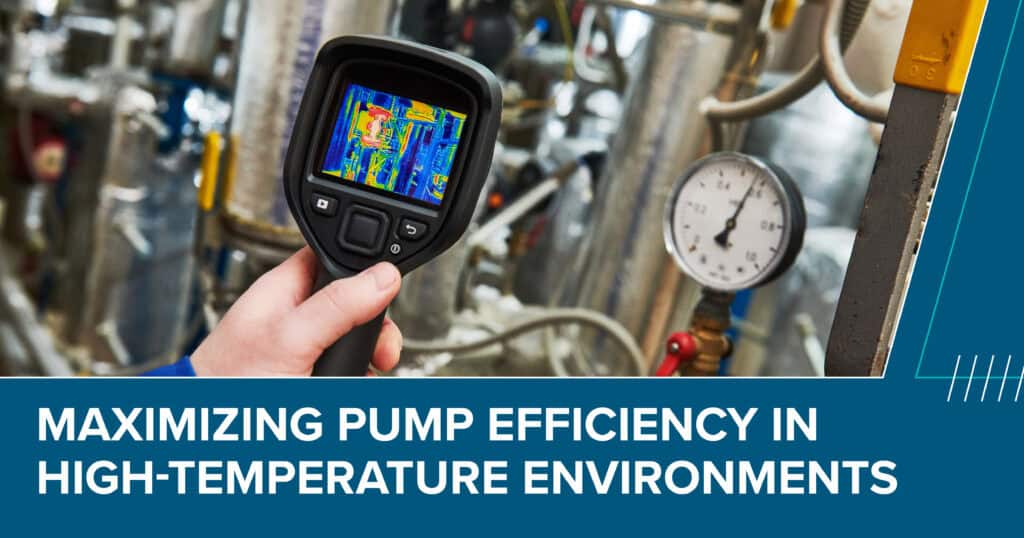High-temperature environments can pose significant challenges for pump systems. High temperatures can affect equipment performance, reliability, and longevity. Pumps exposed to extreme heat must be engineered, maintained, and operated with precision to ensure optimal efficiency. This guide explores best practices to maximize pump performance in high-temperature settings, including material selection, maintenance strategies, and operational adjustments.
Challenges of High-Temperature Pump Operations
Operating pumps in high-temperature environments introduces unique challenges. Thermal expansion, for instance, can lead to misalignment or failure of seals and components. Meanwhile, elevated vapor pressures increase the risk of cavitation. Prolonged exposure to heat can also degrade materials, reducing their lifespan and operational efficiency.
For example, excessive heat can compromise seals in power plants managing steam-driven systems. This can cause unplanned downtime and costly repairs. Recognizing these risks is the first step toward mitigation.
Choose the Correct Materials
Material selection is critical for pumps exposed to extreme heat. Different materials offer unique benefits and limitations, and choosing the correct one depends on the application and operating conditions.
- Metal Alloys are often used for their durability and resistance to deformation under heat. Alloys like stainless steel perform well in high-temperature and high-pressure environments.
- Ceramics provide exceptional resistance to heat and chemical corrosion, making them ideal for applications in chemical plants or power stations. However, their brittleness may limit their use in systems with fluctuating pressures.
- Elastomers are flexible, impact-resistant, and excellent for handling abrasive slurries, but may degrade in prolonged high-temperature environments.
Optimize Maintenance Practices
Proactive maintenance plays a pivotal role in managing pumps in high-temperature environments. Regular inspections and advanced maintenance practices can prevent minor issues from escalating.
- Thermal Inspections: Using infrared imaging to detect hot spots or uneven temperatures can identify potential failures before they occur.
- Lubrication Systems: High-temperature lubricants ensure bearings and moving parts function smoothly, reducing wear and energy consumption. Monitoring lubricant degradation is equally important to maintain efficiency.
Many refineries have leveraged predictive maintenance technologies to monitor pump conditions, extending operational uptime 30 percent and avoiding critical failures.
Operational Adjustments for Efficiency
Adjusting operational parameters can help pumps handle the demands of high-temperature environments more effectively.
- Flow Rate Control: Maintaining optimal flow rates minimizes thermal stress on pump components and reduces wear.
- Variable Frequency Drives (VFDs): VFDs allow precise control of pump speeds, improving adaptability to fluctuating demands and conserving energy.
- Staff Training: Educating operators on high-temperature handling techniques ensures safe and efficient pump operation.
Some industrial facilities using VFDs have reported energy savings of up to 20 percent while reducing wear on critical pump components.
Pump Optimization for High-Temperature Environments
Maximizing pump efficiency in high-temperature environments requires a comprehensive approach. From selecting appropriate materials to implementing robust maintenance and operational practices, every decision plays a role to achieve optimal performance.
At DXP Pacific, we specialize in providing custom solutions tailored to your unique challenges. Contact us today to discover how we can maximize the efficiency and reliability of your pumps, even under the most demanding conditions.

